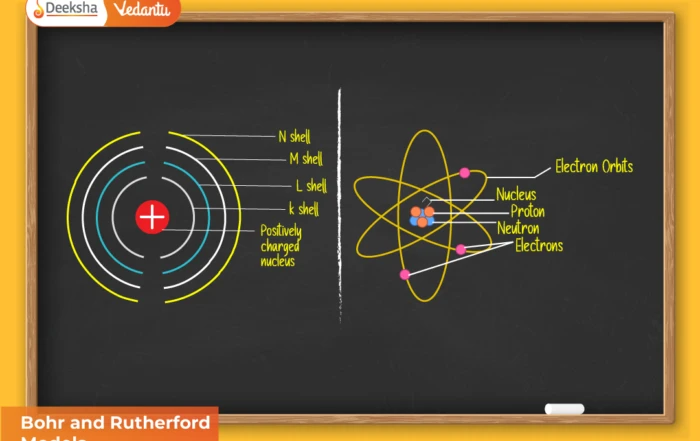
Introduction
In mathematics, a sequence is a list of numbers that follow a particular rule. One of the most important and widely used types of sequence is the Geometric Progression (G.P.).
A Geometric Progression is defined as a sequence in which each term (after the first) is obtained by multiplying the preceding term by a fixed, non-zero number called the common ratio (r).
- If the first term is a, the sequence is:
a, ar, ar², ar³, …, arⁿ⁻¹
Examples of G.P.:
- 2, 4, 8, 16, 32, … (here a = 2, r = 2)
- 81, 27, 9, 3, … (here a = 81, r = 1/3)
- 1, –1, 1, –1, … (here a = 1, r = –1)
Thus, the sequence may grow, shrink, or even alternate between positive and negative values depending on r.
This concept is central not only in Class 11 mathematics but also in competitive exams like JEE, KCET, and COMEDK where students often encounter problems involving series summation, term evaluation, or transformation of G.P. expressions.
General Term of a G.P.
Let the first term be a, and the common ratio be r.
The nth term (Tₙ) is given by:
Tₙ = a rⁿ⁻¹
Derivation:
- First term: T₁ = a
- Second term: T₂ = ar
- Third term: T₃ = ar²
- nth term: Tₙ = a × rⁿ⁻¹
This formula allows us to directly calculate any term in the progression without listing all the previous terms.
Example 1:
Find the 8th term of the G.P. 5, 15, 45, …
Here a = 5, r = 3
T₈ = 5 × 3⁷ = 5 × 2187 = 10935
Sum of First n Terms of a G.P.
The sum of the first n terms (Sₙ) is given by:
Sₙ = a(1 – rⁿ) / (1 – r), if r ≠ 1
If r = 1, then Sₙ = na
Derivation:
Sₙ = a + ar + ar² + … + arⁿ⁻¹
Multiply by r:
rSₙ = ar + ar² + ar³ + … + arⁿ
Subtract:
Sₙ – rSₙ = a – arⁿ
Sₙ(1 – r) = a(1 – rⁿ)
⇒ Sₙ = a(1 – rⁿ)/(1 – r)
This derivation is fundamental and often appears as a proof-based question in CBSE Boards.
Example 2:
Find the sum of the first 12 terms of the G.P. 5, 10, 20, …
Here a = 5, r = 2, n = 12
S₁₂ = 5(1 – 2¹²)/(1 – 2)
= 5(1 – 4096)/(–1)
= 5(–4095)/(–1)
= 20475
Sum to Infinity of a G.P.
If |r| < 1, the series converges and we can find the infinite sum:
S∞ = a / (1 – r)
If |r| ≥ 1, the infinite sum does not exist (it diverges).
Example 3:
Find the sum to infinity of the series 9 + 3 + 1 + 1/3 + …
a = 9, r = 1/3
S∞ = 9 / (1 – 1/3) = 9 / (2/3) = 13.5
Important Properties of G.P.
- Relation of terms:
For any three consecutive terms T₁, T₂, T₃:
T₂² = T₁ × T₃ - Geometric Mean (GM):
If a and b are two positive numbers, their geometric mean is:
GM = √(ab) - Middle term property:
If the number of terms in a G.P. is odd, the middle term is the GM of the extremes. - Product of terms:
The product of n terms of a G.P. = (aⁿ × r(n(n–1)/2))
Insertion of Geometric Means
To insert m G.M.s between a and b:
We require a sequence: a, (ar), (ar²), …, b
Here b = ar(m+1)
From this, r can be found and intermediate terms calculated.
Example 4:
Insert 3 geometric means between 4 and 256.
Equation: 4r⁴ = 256 ⇒ r⁴ = 64 ⇒ r = 2√2
Thus, inserted means are:
4r, 4r², 4r³
Special Cases of G.P.
- If r > 1, terms increase rapidly.
- If 0 < r < 1, terms decrease towards zero.
- If r = –1, the sequence alternates between two values.
- If r < –1, terms alternate with increasing magnitude.
Solved Examples (Step-by-Step)
Example 5:
Find the 10th term of the G.P. 3, 6, 12, 24, …
Here a = 3, r = 2
T₁₀ = 3 × 2⁹ = 3 × 512 = 1536
Example 6:
If the 4th term of a G.P. is 16 and the 7th term is 128, find a and r.
T₄ = ar³ = 16
T₇ = ar⁶ = 128
Divide: (ar⁶)/(ar³) = r³ = 128/16 = 8
⇒ r = 2
Now substitute back:
a × 2³ = 16 ⇒ a = 2
Example 7:
Sum of first 8 terms of 2, 6, 18, …
a = 2, r = 3, n = 8
S₈ = 2(1 – 3⁸)/(1 – 3)
= 2(1 – 6561)/(–2)
= 6560
Example 8:
If 729, x, y, 64 are in G.P., find x and y.
r³ = 64/729 ⇒ r = 4/9
x = 729 × (4/9) = 324
y = 729 × (4/9)² = 144
Example 9:
Find the infinite sum of 1 + 1/2 + 1/4 + …
a = 1, r = 1/2
S∞ = 1/(1 – 1/2) = 2
Example 10 (Exam Level):
If the 5th and 8th terms of a G.P. are 48 and 384 respectively, find the first term and common ratio.
T₅ = ar⁴ = 48
T₈ = ar⁷ = 384
Dividing: r³ = 384/48 = 8 ⇒ r = 2
Now ar⁴ = 48 ⇒ a × 16 = 48 ⇒ a = 3
So G.P. = 3, 6, 12, …
Applications of G.P.
- Finance: Compound interest, annuities, depreciation.
- Physics: Radioactive decay, sound intensity attenuation.
- Biology: Population models.
- Computer Science: Algorithm growth (binary search, divide and conquer).
- Economics: Growth models, inflation analysis.
Common Pitfalls
- Forgetting exponent placement in Tₙ = a rⁿ⁻¹
- Using sum-to-infinity when |r| ≥ 1
- Confusing A.P. and G.P. formulas
- Sign errors when r is negative
Marks Allotment in Exams
- CBSE Boards: 6–8 marks (short/long answer questions)
- JEE Main: 1–2 questions, 4–8 marks
- KCET/COMEDK: 1–2 questions, 2–3 marks
- JEE Advanced: Appears in complex mixed algebra questions
FAQs
Q1: What is the nth term of a G.P.?
Tₙ = a rⁿ⁻¹
Q2: Can a G.P. have negative terms?
Yes, if r is negative.
Q3: When is the sum to infinity valid?
When |r| < 1.
Q4: What is the relation between three numbers in G.P.?
If a, b, c are in G.P., then b² = ac.
Q5: Where is G.P. used in real life?
Finance, computing, science, and economics.











Get Social